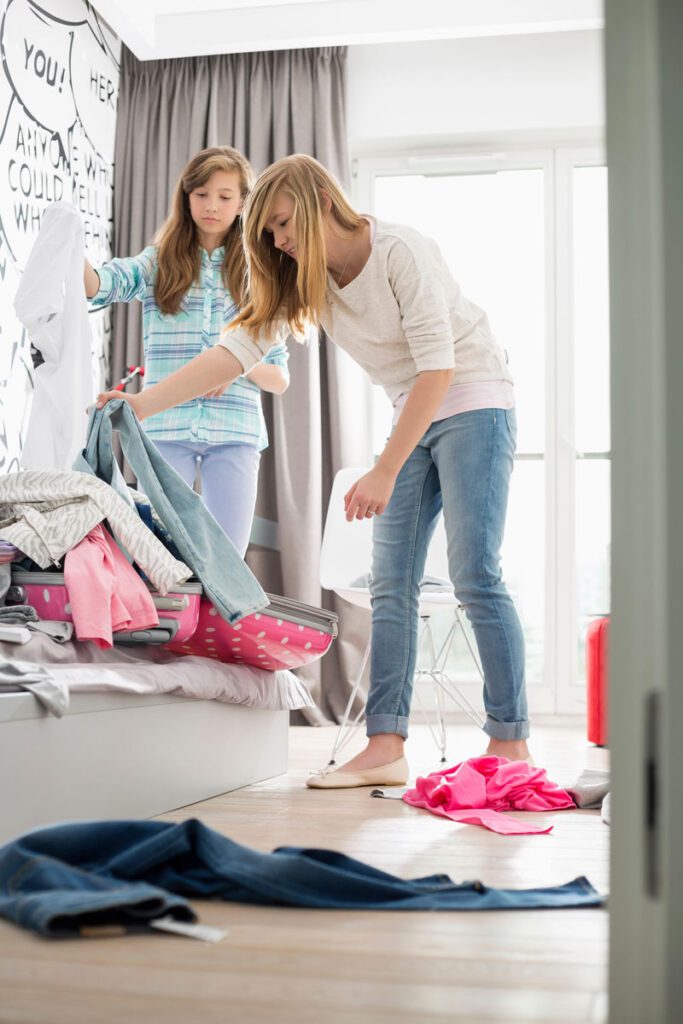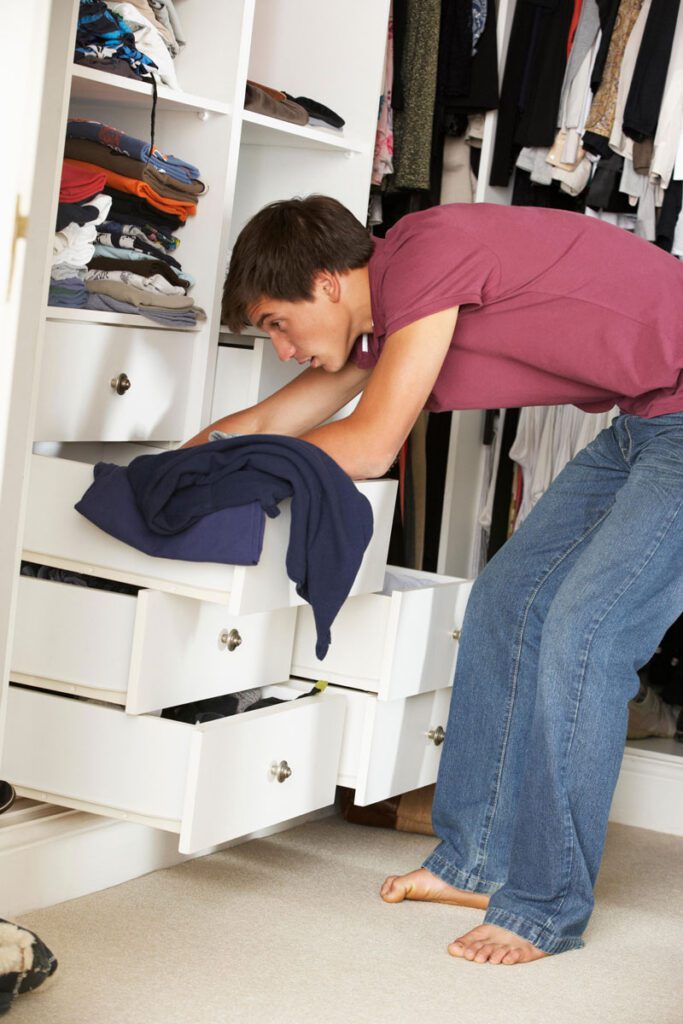A decluttering expert offers advice for parents who are sick of messy bedrooms. By Katie Wright.
It’s hard enough to get kids to tidy their rooms on a regular basis, so when it comes to getting rid of clothes, toys and general junk that has accumulated over the years parents may be tempted to just get stuck in and do it themselves.
But that’s not the best approach, says professional declutterer Kate Ibbotson, who is supporting the British Heart Foundation Declutter Challenge (bhf.org.uk/declutter) this autumn, calling on the public to donate preloved items to help fund life saving research.
“Avoid decluttering their belongings without their consent,” she says. “Start the process with communication – older children are more likely to feel motivated to declutter if they feel their opinions and wishes are respected.”
Before you begin, take some time to talk about why it’s important to throw away old or unused items.
“Discuss how the benefits could be relevant to them – after all, a clutter-free bedroom means it’s quicker and easier to tidy,” Ibbotson says.
“Also discuss the emotional benefits – with less clutter around, the house looks and feels nicer, resulting in a more relaxing environment for everyone, and it creates more time to spend on things they enjoy.”
Here, Ibbotson offer seven useful tips to help kids and teens get organised.

1. Ask the right questions
If you’re faced with a child who doesn’t want to throw anything away in case they might need it in future, encourage them to consider if that’s really true.
Ibbotson advises: “Teach them the skill of curating belongings by asking them questions like, ‘When was the last time you used this?’, ‘Do you have something else that does the same job?’ or, ‘Could the space this takes up be better used to store something else?’”

2. Chop it into chunks
Setting aside a whole day to overhaul a wardrobe, bedroom or playroom could feel overwhelming, but short decluttering sessions are more managable.
“Avoid approaching decluttering as if it’s a chore,” says Ibbotson. “This may mean simply getting your teen to declutter in small bursts of 15 or 30 minutes whilst listening to their favourite music.”

3. Tackle the ‘floordrobe’
Is your child seemingly unable to put anything back in their wardrobe, instead chucking everything on the floor (or over the back of a chair) until a mountainous pile of garments dominates the room?
“Encourage them to adopt daily habits to keep in control of their wardrobe, as a lack of daily routines are the cause of the ‘floordrobe’,” says Ibbotson. “These could include a permanent charity box in their bedroom where they can toss in unwanted items as they go, or even a daily routine of putting clothes away or in the laundry basket.”
To prevent the accumulation of more unworn clothes, talk to your kids about the environmental impact of the fashion indsutry.
“Teenagers may already have their own views on the importance of sustainability, so you can help by encouraging them to avoid buying too much ‘fast fashion’,” Ibbotson advises. “Instead, see if they can focus on owning fewer clothes and consider buying things pre-loved.”

4. One in, one out
“If they are getting new items such as backpacks, pencil cases or sports gear, emphasise the ‘one in, one out rule’,” says Ibbotson, meaning throwing away one thing for every new purchase.
“If the items they are replacing are still in good condition, they can donate them to charity.”

5. Lead by example
It’s no good telling kids to clear out their rooms when the rest of the house is overflowing with junk.
“As adults, the best thing we can do if we want to encourage a behaviour is to consistently model it ourselves,” says Ibbotson.
“Our homes are constantly changing and evolving so make regular decluttering part of life, but do it ‘as you go’ to avoid feeling overwhelmed.”

6. Save some sentimental items
While it’s sensible to ditch clothes that don’t fit or toys that teens have outgrown, kids might be reluctant to part with favourite teddies or dolls.
“Stuffed animals can continue to hold sentimental value to teens but agree boundaries on what you have room to store,” Ibbotson says, then donate items that are still in good condition.
“Encourage them to make the link between donating unused toys and games to charity and go further by talking about what, who and how exactly that could help.”

7. Offer incentives
A bit of bribery can go a long way when it comes to decluttering, Ibbotson says: “Create incentives to encourage your teen to keep on top of their belongings by making treats, screen time or spending money, dependant on keeping their space tidy.”
It may be exasperating at times but try to encourage rather than nag, she adds: “Adopting habits takes time and patience so keep going with the encouragement – even if it may seem repetitive!”






